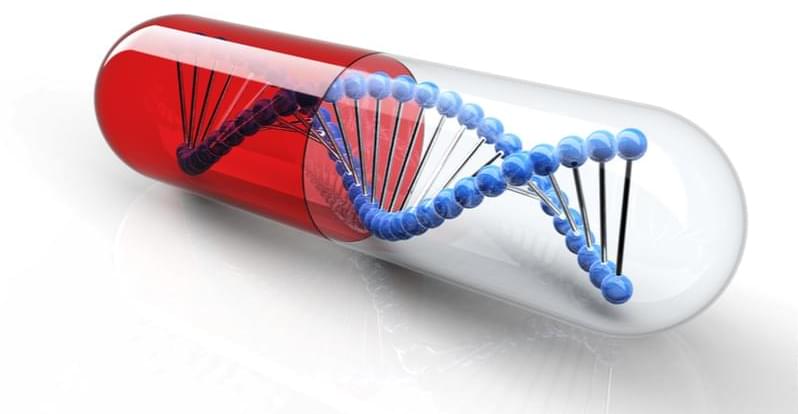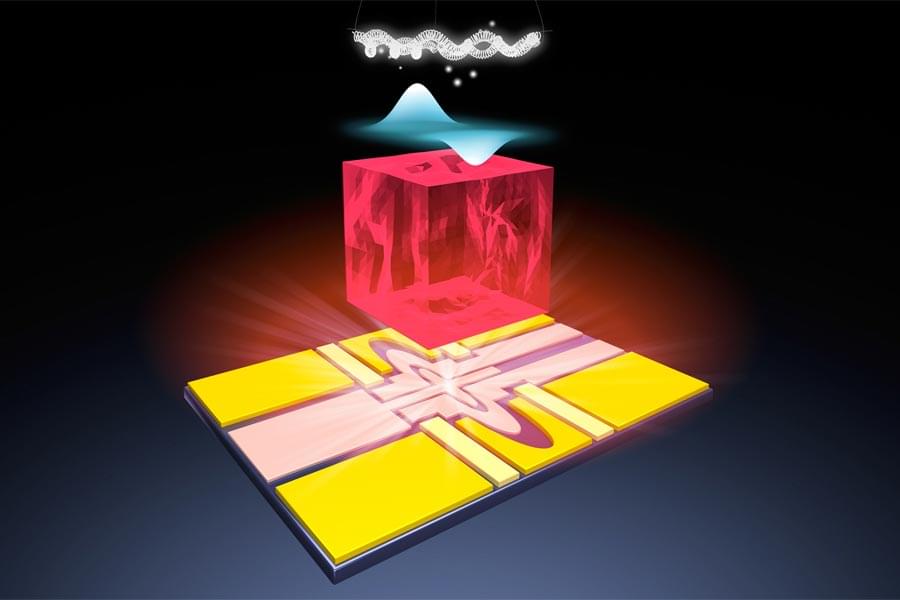Microsoft announces new security category to combat rising cybercrime and a shortage of cybersecurity professionals.



Called the Artemis lunar base, it will include a habitation unit (for up to four astronauts) and separate mining and fuel processing facilities. These facilities would be built far away from the base camp and would serve to produce rocket fuel, water, oxygen, and other materials needed for extended exploration of the lunar surface while decreasing supply needs from Earth.
Get more updates on this story and more with The Blueprint, our daily newsletter: Sign up here for free.
There will also be an electrical grid for the two units which will be connected during emergencies for resiliency and robustness. Sandia’s researchers note that the electrical system controller for the habitation unit will be very similar to the International Space Station (ISS)’s direct current electrical system with some notable differences.

NVIDIA has published the source code of its Linux kernel modules for the R515 driver, allowing developers to provide greater integration, stability, and security for Linux distributions.
The source code has been published to NVIDIA’s GitHub repository under a dual licensing model that combines the GPL and MIT licenses, making the modules legally re-distributable.
The products supported by these drivers include all models built on the Turing and Ampere architecture, released after 2018, including the GeForce 30 and GeForce 20 series, the GTX 1,650 and 1,660, and data center-grade A series, Tesla, and Quadro RTX.

Deep reinforcement learning.
The system is so efficient because it uses deep reinforcement learning, meaning it actually adapts its processes when it is not doing well and continues improving when it makes progress.
“We have set this up as a traffic control game. The program gets a ‘reward’ when it gets a car through a junction. Every time a car has to wait or there’s a jam, there’s a negative reward. There’s actually no input from us; we simply control the reward system,” said Dr. Maria Chli, a reader in Computer Science at Aston University.

In a ghastly vision of a future cut off from sunlight, the machine overloads in the Matrix movie series turned to sleeping human bodies as sources of electricity. If they’d had sunlight, algae would undoubtedly have been the better choice.
Engineers from the University of Cambridge in the UK have run a microprocessor for more than six months using nothing more than the current generated by a common species of cyanobacteria. The method is intended to provide power for vast swarms of electronic devices.
“The growing Internet of Things needs an increasing amount of power, and we think this will have to come from systems that can generate energy, rather than simply store it like batteries,” says Christopher Howe, a biochemist and (we assume) non-mechanical human.

Future quantum computers are expected not only to solve particularly tricky computing tasks, but also to be connected to a network for the secure exchange of data. In principle, quantum gates could be used for these purposes. But until now, it has not been possible to realize them with sufficient efficiency. By a sophisticated combination of several techniques, researchers at the Max Planck Institute of Quantum Optics (MPQ) have now taken a major step towards overcoming this hurdle.
For decades, computers have been getting faster and more powerful with each new generation. This development makes it possible to constantly open up new applications, for example in systems with artificial intelligence. But further progress is becoming increasingly difficult to achieve with established computer technology. For this reason, researchers are now setting their sights on alternative, completely new concepts that could be used in the future for some particularly difficult computing tasks. These concepts include quantum computers.
Their function is not based on the combination of digital zeros and ones—the classical bits—as is the case with conventional, microelectronic computers. Instead, a quantum computer uses quantum bits, or qubits for short, as the basic units for encoding and processing information. They are the counterparts of bits in the quantum world—but differ from them in one crucial feature: qubits can not only assume two fixed values or states such as zero or one, but also any values in between. In principle, this offers the possibility to carry out many computing processes simultaneously instead of processing one logical operation after the other.

Heart attacks are the world’s leading cause of death, yet the few treatments available are often expensive and inaccessible. Although that’s been the case for years, the World Health Organization warned back in 2020 heart disease numbers were still on the rise.
Verve Therapeutics says altering human genomes to prevent the buildup of bad cholesterol might be the answer, and is creating what CEO Sekar Kathiresan says may be a permanent solution to heart disease. The company is backed by Google Ventures, according to a report about the breakthrough published Friday in Bloomberg. Verve also counts a Harvard medical professor and an award-winning medical expert among its cofounders.
“We’re on the cusp of potentially transforming that model to a one-and-done treatment,” Kathiresan told the business publication.

In a study printed in PNAS, researchers have shown that telomerase reverse transcriptase (TERT) can be given to cells in living mice through a viral vector, taking the idea of life-extending gene therapies from science fiction to reality.
Why a cytomegalovirus?
The human cytomegalovirus (CMV) is widely known as an endemic virus that, while usually asymptomatic, is known to cause with harmful effects in babies and older adults. However, some of its properties make this virus suitable for delivering gene therapies. As cytomegaloviruses can carry large genetic payloads and don’t overwrite the DNA of their host cells [1], replacing the genes of these viruses with beneficial DNA may be safer than approaches with more potential off-target effects; development in this area is ongoing, and a phase 1 human clinical trial has already been conducted [2].
R&D & Innovation For U.S. Security & Resilience — Kathryn Coulter Mitchell, Acting Under Secretary for Science and Technology, DHS Science and Technology Directorate, Department of Homeland Security.
Kathryn Coulter Mitchell (https://www.dhs.gov/person/kathryn-coulter-mitchell), is Acting Under Secretary for Science and Technology (S&T), at the U.S. Department of Homeland Security, where as the science advisor to the Homeland Security Secretary, she heads the research, development, innovation and testing and evaluation activities in support of the Department of Homeland Security’s (DHS) operational Components and first responders across the nation.
The Science and Technology Directorate is responsible for identifying operational gaps, conceptualizing art-of-the-possible solutions, and delivering operational results that improve the security and resilience of the nation.
In her former role as the Chief of Staff, Ms. Coulter Mitchell oversaw the operational and organizational needs of the $1 billion, 500-career-employee Directorate. A member of the Senior Executive Service, she was responsible for strategy, policy, organizational development, communications, and planning and she guided the creation of a DHS strategic vision and roadmap for research and development (R&D), the reestablishment of Integrated Product Teams to prioritize and manage DHS R&D investments, and the crafting of strategies for organizational effectiveness. Ms. Mitchell previously served S&T as Deputy Chief of Staff and Senior Communications Advisor for the Under Secretary and Deputy Under Secretary.
Ms. Coulter Mitchell came to DHS after a 15-year career in the private sector and on Capitol Hill. In industry, she provided organizational strategy and communications support to the S&T directorate and the Federal Emergency Management Agency where she authored the communications strategy for the multi-million dollar, multi-agency rollout of Presidential Policy Directive 8 (This directive is aimed at strengthening the security and resilience of the United States through systematic preparation for the threats that pose the greatest risk to the security of the Nation, including acts of terrorism, cyber attacks, pandemics, and catastrophic natural disasters.)

The digital device you are using to view this article is no doubt using the bit, which can either be 0 or 1, as its basic unit of information. However, scientists around the world are racing to develop a new kind of computer based on the use of quantum bits, or qubits, which can simultaneously be 0 and 1 and could one day solve complex problems beyond any classical supercomputers.
A research team led by scientists at the U.S. Department of Energy’s (DOE) Argonne National Laboratory, in close collaboration with FAMU-FSU College of Engineering Associate Professor of Mechanical Engineering Wei Guo, has announced the creation of a new qubit platform that shows great promise to be developed into future quantum computers. Their work is published in the journal Nature.
“Quantum computers could be a revolutionary tool for performing calculations that are practically impossible for classical computers, but there is still work to do to make them reality,” said Guo, a paper co-author. “With this research, we think we have a breakthrough that goes a long way toward making qubits that help realize this technology’s potential.”